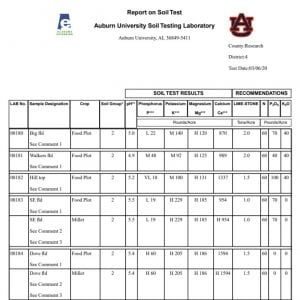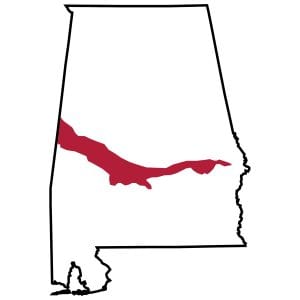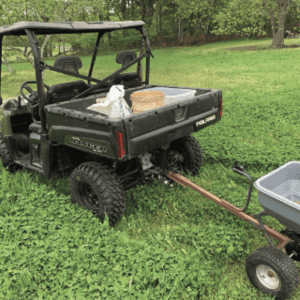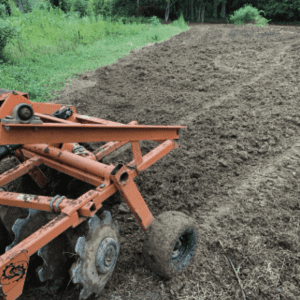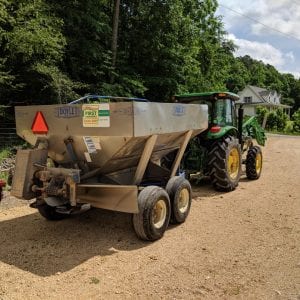Forestry & Wildlife

Before planting a food plot, land managers should always have the soil tested for nutrient and pH levels. Applying recommended amendments can result in higher yields and greater palatability of browse.
Maximizing yields and producing the most nutritious and attractive browse is important for wildlife managers, particularly when the acreages they plant are small. Growing abundant, high-quality food attracts white-tailed deer and other wildlife to these plots more often.
Through soil testing, managers can maintain proper soil pH and nutrient levels of nitrogen, phosphorous, and potassium that are required for producing quality plots. The key is knowing how to use soil test reports. Interpreting the soil test results and recommendations while properly applying the recommended amendments can greatly improve your plantings and increase the impact of your plots in terms of wildlife use, benefits, and sightings.
The Soil Test
Land managers can obtain low-cost soil testing services from the Soil, Forage, and Water Testing Laboratory at Auburn University (https://aaes. auburn.edu/soil-forage-water-testing- lab/). A basic soil test will provide the information needed on soil pH and current levels of phosphorous (P), potassium (K), and nitrogen (N). Based on these levels, the test results will include recommendations on how much limestone/lime (in tons) and nutrients (in pounds) should be applied per acre for maximum yield of the specified crop. Phosphorous and potassium will be reported in pounds per acre present in the soil, and ratings such as very low (VL), low (L), medium (M), high (H), or very high (VH) will be provided. Some soil tests also provide levels of other nutrients such as magnesium (Mg) and calcium (Ca) (figure 1). Although you may list the crop as “Food Plot” when submitting samples, specifically listing the crops you intend to plant will provide more accurate nutrient recommendations.
- Figure 1. An example of a soil test report from the Soil Testing Laboratory at Auburn University. Results show nutrient needs and recommendations based on soil samples taken from five food plot locations.
- Figure 2. The Black Belt is the only region in Alabama with extensive areas of alkaline soils (soil pH > 7.0).
Soil pH and Amendments
Understanding soil pH is an important, but often overlooked, aspect of soil health. Soil pH is the value that indicates the acidity or alkalinity of a soil. Soils with a pH < 7 are acidic, and a pH > 7 is alkaline. A pH of 7 is neutral, neither acidic or alkaline. Soils are generally acidic in Alabama, with the exception of some soils in the Black Belt region (figure 2).
When soil pH is acidic, many nutrients become less available to plants. By raising the pH to the optimal range of 6.0 to 6.5 for most food plot crops, growth may improve even without fertilizer applications while subsequent fertilizer applications will increase growth and yield because those nutrients are made more available. In low pH soils it is more important to amend the pH than to apply fertilizer because the plants cannot make use of all nutrients in low pH conditions (figure 3).
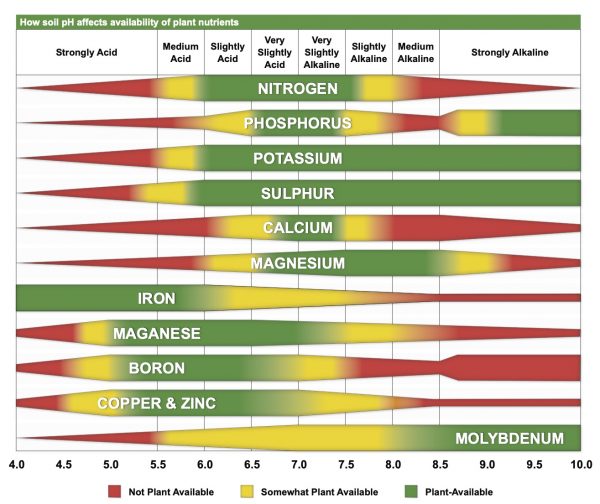
Figure 3. How soil pH affects availability of eleven nutrients needed for plant health
Low soil pH is raised by adding a liming material, most commonly quarried agricultural lime (aglime). Aglime is ground limestone in the form of either calcitic lime (CaCO3) or dolomitic lime (CaMg(CO3)2). A liming material’s effectiveness is based on the calcium carbonate equivalent (a measurement of the material’s ability to change pH) and the particle size of the material (table 1).
Table 1. Common Liming Materials and Their Chemical Formulas and Calcium Carbonate Equivalents (CCE)
| Liming Material | Chemical Formula | Calcium Carbonate Equivalent (CCE) |
|---|---|---|
| Calcitic limestone | CaCO3 | 95 to 108% |
| Dolomitic limestone | CaMg (CO3)2 | 85 to 100% |
| Basic slag | CaSiO3 | 50 to 70% |
| Hydrated lime | Ca (OH)2 | 134% |
| Burned lime | CaO | 178% |
| Industrial by-products | Variable | Variable |
The fineness of the liming materials affects how quickly the materials react with the soil. The finer the lime, the faster it will neutralize soil pH. Most states have laws concerning what can be marketed as aglime. In Alabama, for example, a product cannot be marketed as agricultural limestone unless it meets the following criteria:
- the material has at least a 90 percent calcium carbonate equivalent
- at least 90 percent of the material passes through a 10-mesh sieve
- at least 50 percent of the material passes through a 60-mesh sieve
While lime starts to increase the pH within a few weeks, the full effects will take 6 months or longer. If this is the first time a plot has been limed or if it has not been limed in a long time, soil may require 1 to 2 tons of lime per acre and sometimes more (check your soil test results).
Because lime is crushed rock, it is extremely dense. Aglime can be purchased by the bag in bulk and delivered, or in bulk and spread by the supplier with their equipment. Costs can vary regionally, but in the Southeast approximately $30 to $40 per ton is charged to purchase aglime and have it spread by a supplier.
Wildlife managers may have difficulty obtaining a retailer to spread lime because they usually are planting low- acreage areas as compared to large production-scale farms. They often are placed at the bottom of the list as larger acreages take precedence. In this case, lime can be delivered, and buggies can be rented to spread the lime with a hydraulic system tractor. Small, chain-driven or drop spreaders (with capacities of 1 ton or less) can be pulled behind an ATV but loading and distributing lime this way can take a great deal of time and effort. However, this may be the only option for small or remote plots.
Planning is important when amending soil pH. For areas that are new to production, it is a good idea to disc lime into the soil a few inches since soil pH changes will be more uniform if incorporated into the soil.
Pelletized lime is often marketed to wildlife managers and homeowners because it can be spread with a garden spreader or an electric hitch-mounted spreader. Most available pelletized lime is simply aglime formed into pellets. It is sometimes marketed as reacting faster than aglime. Some products do react faster because they are produced from extremely fine mesh lime; however, they do not remain in the soil as long as coarser lime products. The bottom line: These products are easier to spread and are a good option for small or inaccessible plots, but they are much more expensive and do not have any other benefits over regular aglime. Pelletized lime is around $4 for a 40-pound bag, the equivalent of $200/ton.
Soil Fertility and Improvement
Plants require nutrients that are acquired from the air, water, and soil. Those that are acquired from the soil are called mineral nutrients. The three primary mineral nutrients are nitrogen, phosphorus, and potassium.
Nitrogen (N)
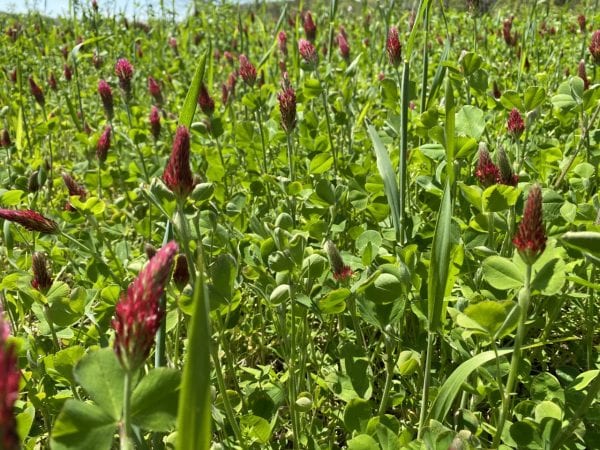
Figure 4. Legumes such as this crimson clover (blooming) obtain nitrogen from the air and add it to the soil when parts of the plants decompose. This food plot also contains arrowleaf clover, winter wheat, and winter peas.
Nitrogen is the nutrient that most frequently limits terrestrial plant growth. Nitrogen fertilizer is needed in greatest quantities for most non-legume crops. When the soil has adequate nitrogen, plants exhibit increased growth, higher protein levels, and thinner cell walls. These are characteristics of high-quality forage that is more nutritious, digestible, and preferred by deer and other wildlife.
Some forages require more nitrogen than others. For example, corn is a heavy nitrogen user, while wheat does not need as much. Legumes, such as clovers, obtain nitrogen from the air and add it to the soil as parts of the plant decompose (figure 4).
Apply nitrogen fertilizer according to soil test recommendations for optimal plant growth. If legumes are planted as part of a mixture, and greater than 30 percent of the plant stand is legumes, additional nitrogen fertilizer is not required. One way landowners and wildlife managers can determine if plants are deficient in nitrogen is by plant appearance. Nitrogen-deficient plants often have a yellow discoloration.
Phosphorous (P)
Phosphorous enhances plant root growth and is essential for plant reproduction and energy transfer during photosynthesis. For deer, phosphorous plays a role in the growth of antlers and teeth, which are mostly calcium phosphates. Plants deficient in phosphorous may appear purple or red. The amount of phosphorous fertilizer required for plant growth will depend on current soil test phosphorous levels, soil type, and crop. Fertilize according to soil test recommendations to achieve optimal plant growth.
Potassium (K)
Potassium increases root growth, stem strength, and vigor. It also aids in photosynthesis and regulates nitrogen and water uptake. For wildlife, it is important for nerve and muscle function. Plants deficient in potassium may appear to be scorched along the leaf margins. The amount of potassium fertilizer required for plant growth will depend on current soil test potassium levels, soil type, and crop.
Fertilizer Analysis
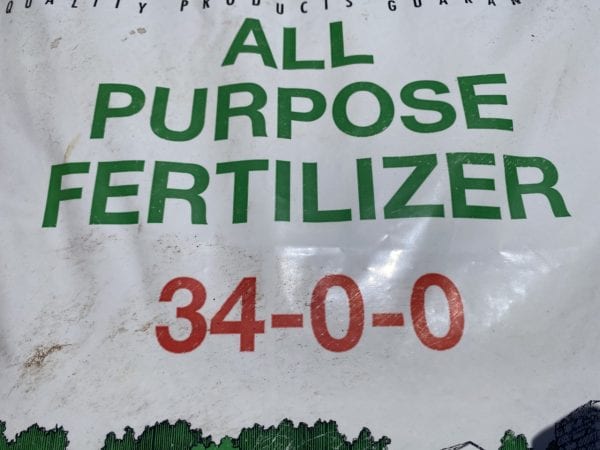
Figure 5. The fertilizer analysis is printed prominently on the bag. This bag of ammonium nitrate contains 34 percent nitrogen. In a 50-pound bag, there would be 17 pounds of nitrogen.
A fertilizer analysis is a measure of the percentage of nutrients by weight in a fertilizer and. is printed prominently on the bag (figure 5). For example, a 50-pound fertilizer bag labeled 13-13-13 will contain 6.5 pounds of nitrogen, 6.5 pounds of phosphorous as phosphorous oxide (P205), and 6.5 pounds of potassium as potassium oxide (K2O), potash.
A 13-13-13 bag (commonly called Triple 13) is an example of a complete fertilizer because it contains all three primary nutrients. The cost for a 13-13-13 will be around $12 per 50-pound bag. While complete fertilizers often are used in food plots, they are not always the best or most cost-effective choice. High-analysis fertilizers cost only a little more ($12 to $20 per 50-pound bag), but they may contain more than twice the amount of the nutrient needed. For example, a 50-pound bag of ammonium nitrate (34-0-0) contains 17 pounds of nitrogen; a 50-pound bag of triple superphosphate (0-46-0) contains 23 pounds of phosphate; and a 50-pound bag of sulfate of potash (0-0-50) contains 25 pounds of potash.
When used properly, high-analysis fertilizers improve soil nutrients without overfertilizing. The money saved when using high-analysis fertilizers is greatly realized when planting multiple acres over the years.
Applying excess fertilizer is poor environmental stewardship and is never recommended. The cost, labor, and stewardship benefits are realized even more when a test comes back and only nitrogen is needed, which is relatively common.
Fertilizer Calculations
To determine how many pounds of a specific fertilizer are required to fulfill a fertilizer recommendation, divide the recommended pounds by the percentage of that nutrient in decimal form. For example the recommendations for the SE fld in figure 1 call for 70 pounds of phosphorous per acre. Triple super phosphate (TSP) at 0-46-0 will be a good choice to fulfill this recommendation as it contains 46 percent phosphorus. Dividing 70 by 46 percent (70/0.46) gives 152 pounds, which is how much TSP will be needed per acre to fulfill the phosphorous recommendation.
Figure 1 also recommends 60 pounds of nitrogen per acre for the SE fld. Ammonium nitrate (34-0-0) is a common nitrogen fertilizer. Dividing 60 pounds by the nutrient percentage (0.34) results in 176 pounds of ammonium nitrate per acre. An online chemical fertilizer calculator from the Auburn University Soil Testing Laboratory, available on their website at https://aaes.auburn.edu/soil-forage-water- testing-lab/, may also help with calculating application rates to reduce costs.
- Figure 6a. ATVs and UTVs paired with downsized implements can work well when preparing and amending small or remote plots. A small disc can easily incorporate the pelletized lime and fertilizers that a tow behind spreader distributes. Ag lime is best applied with a tow behind chain-driven or drop spreader as it is too dense for light duty, drive agitated spreaders to distribute.
- Figure 6b.
- Figure 7. Landowners can rent buggies to spread lime with a hydraulic system tractor.
To fulfill the fertilizer recommendations for the SE fld in figure 1, 152 pounds of TSP and 176 pounds of ammonium nitrate will need to be spread per acre. In smaller plots, these fertilizers can be bought by the 50-pound bag and spread with a walk-behind garden spreader or ATV-mounted spreader (figure 6). For larger acreages, fertilizer can be spread with a three-point hitch spreader, purchased in bulk and spread by the supplier, or spread with a rented fertilizer buggy (figure 7).
Fertilizers should be spread just before planting and can be incorporated into the soil with a disc, but it is not required. Some crops such as corn will require a second application of nitrogen after germination. It is important to consider the weather when planning fertilizer applications as prolonged dry spells or heavy rains can create substantial fertilizer loss from evaporation and runoff.
Summary
It is good practice to test soil in food plots every 2 to 3 years or more often if plots are unsuccessful. Lime and fertilizer can be purchased through various farm supply stores. Spreaders often can be rented from the same suppliers, and some soil conservation districts have equipment to rent. After liming, planting, and fertilizing, monitor plots for nutrient deficiencies. Keep a log with the dates of lime and fertilizer applications, planting rates, and herbicides used to monitor success and to make improvements over the years. It is also a good idea to install exclusion cages (4’ × 4’ × 4’ cages) in plots to discern heavy wildlife browse from failed plots. For help interpreting soil test results, contact your local Extension office.
Download a Soil Testing, Liming, and Fertilizing Wildlife Food Plots, FOR-2080.



